
Adam and Eve Eating the Forbidden Fruit in City of God, about 1440–50, Master of the Oxford Hours, artist, and Saint Augustine, author. Tempera colors, gold and silver paint on parchment; 14 1/4 x 10 3/4 in. The J. Paul Getty Museum, Ms. Ludwig XI 10, fols. 31v–32
Gluttony—overindulging in food or drink—was one of the seven deadly sins of the medieval European church. In the medieval view, the story of Adam and Eve established gluttony as man’s original and worst sin. Tempted by the snake, they ate the forbidden fruit from the tree of knowledge and were banished from the Garden of Eden, causing the fall of mankind.
Images in the exhibition Eat, Drink, and Be Merry: Food in the Middle Ages and Renaissance feature dramatic images of overeating meant to warn you, the devout viewer, against falling prey to the same sin.
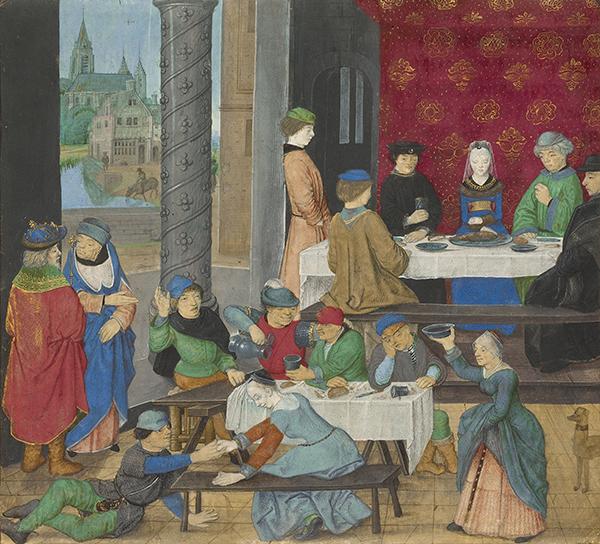
The Temperate and the Intemperate in The Memorable Deeds and Sayings of the Romans, about 1475–80, Master of the Dresden Prayer Book, artist, Valerius Maximus, author. Tempera colors and ink on parchment, 6 7/8 x 7 5/8 in. The J. Paul Getty Museum, Ms. 43, recto
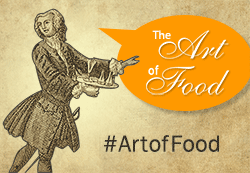 Many images in medieval and Renaissance art portray peasants gorging and carousing, seeming to suggest that low social class went hand in hand with gluttony and other bad behavior. This 15th-century image, for example, shows us two groups of people having a meal. The “intemperate” peasants at front cause a drunken ruckus, while the “temperate” group of nobles behind them eat modestly with upright postures.
Many images in medieval and Renaissance art portray peasants gorging and carousing, seeming to suggest that low social class went hand in hand with gluttony and other bad behavior. This 15th-century image, for example, shows us two groups of people having a meal. The “intemperate” peasants at front cause a drunken ruckus, while the “temperate” group of nobles behind them eat modestly with upright postures.
The message is clear: The rich are good, the poor are trouble.
Was this really true? Well…no. For one thing, only the rich could afford to commission artworks, including painted books. Wealthy patrons wanted nothing more than to be portrayed in the most noble and honorable way. In a world where Christian principles were the law, one did not want to be seen as gluttonous and therefore hellbound.
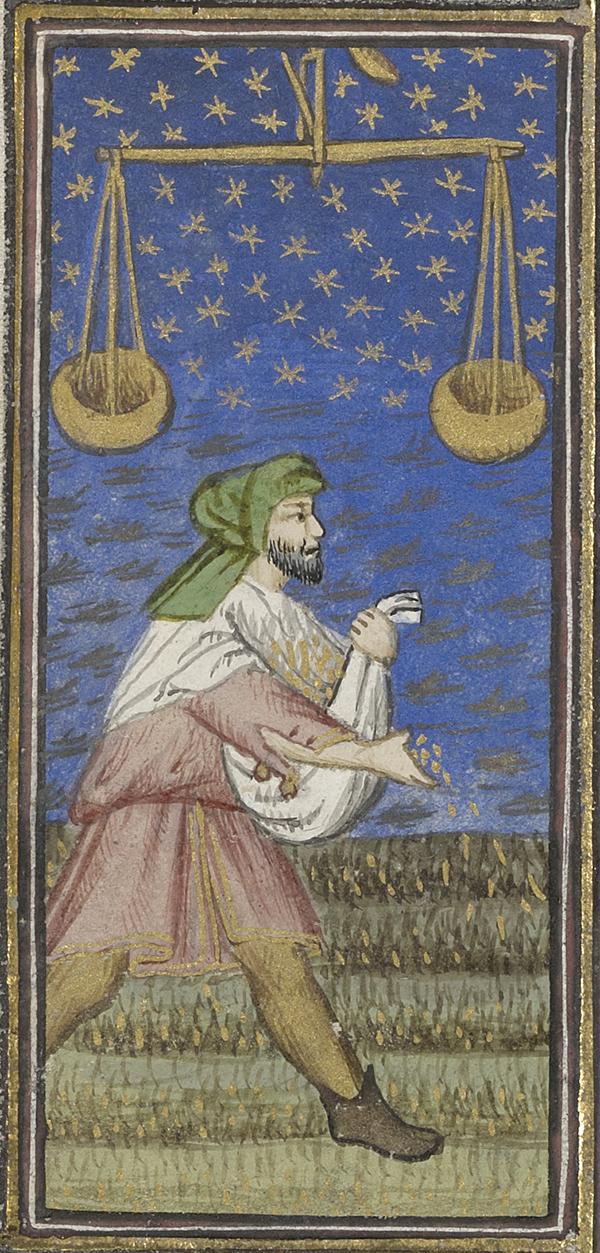
September: A Man Sowing in Book of Hours, about 1415–20, Workshop of the Rohan Master. Tempera colors, gold paint, gold leaf, and ink on parchment; 8 1/16 x 5 13/16 in. The J. Paul Getty Museum, Ms. 22, fols. 9v–10
It would have been difficult for peasants to overindulge when they didn’t even have enough to eat each day. Growing and making food for subsistence was the full-time job of many peasants, and their daily lives revolved around the harvest cycle. Famines were frequent and had devastating effects on the farming poor who often had no choice but to starve or beg when their crops failed.
Other medieval images pick up this point, damning the wealthy as the true gluttons. Take this depiction of the biblical parable of the Feast of Dives. It tells the story of a wealthy man (Dives) who refuses to help a beggar (Lazarus) who humbly asks for some scraps of food. Instead, Dives sends his dogs after Lazarus, who later dies from hunger.

The Feast of Dives in Spinola Hours, about 1510–20, Master of James IV of Scotland. Tempera colors, gold, and ink on parchment; 9 1/8 x 6 9/16 in. The J. Paul Getty Museum, Ms. Ludwig IX 18, fol. 21v
Dives, with his double chin and rotund form, is portrayed as a bad Christian because of his gluttonous nature and his unwillingness to spare food for a poor man. At the bottom of this illumination, two angels fly above Lazarus’s dead body and wrap his soul with a white cloak, clearly marking Lazarus as the good Christian.
So were the wealthy more gluttonous than the poor? We can’t say whether they were more sinful, but they certainly had more to eat.
The medieval rich had much more time, leisure, and money than the poor to enjoy nutritious food. Hunting, for example, was a common pastime of the nobility. The catch from these hunting sprees soon after graced the tables of noblemen, who enjoyed bounteous food and drink at the feasts that followed. Grains and beans were the mainstay of the medieval peasant’s diet, with meat and dairy rare luxuries.

Hunters Roasting a Dismembered Boar’s Carcass in Book of the Hunt, about 1430–40, unknown artist, Gaston Phébus, author. Tempera colors, gold paint, silver paint, and gold leaf on parchment; 10 3/8 x 7 1/4 in. The J. Paul Getty Museum, Ms. 27, fols. 67v–68
The ultimate in upper-crust gluttony is represented by the feasting Janus figure below, whose two heads allow him to eat twice as much as a normal man. The table brims with vessels and utensils, suggesting the abundance of food found in January, when farming work was replaced by feasting on the fall harvest. The lower classes only got a glimpse of such splendid feasts as cooks, servers, or consumers of scraps—if the hosts decided to give the leftover food to charity.

January: Janus Feasting in Ruskin Hours, about 1300, unknown artist. Tempera colors, gold leaf, and ink on parchment; 10 3/8 x 7 3/16 in. The J. Paul Getty Museum, Ms. Ludwig IX 3, fol. 2v
__________
Eat, Drink, and Be Merry: Food in the Middle Ages and Renaissance is on view through January 3, 2016, at the J. Paul Getty Museum at the Getty Center.

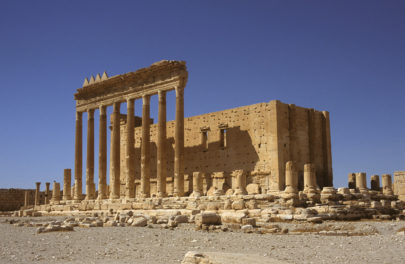
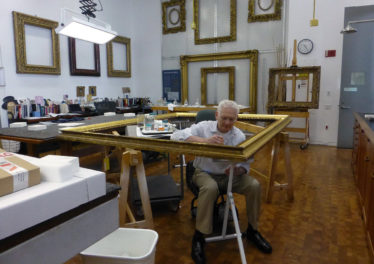
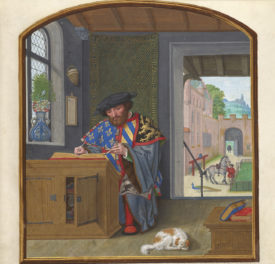
Great read.